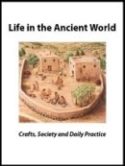
Preserving the memory of the dead was among the functions of the cult of dead kin in ancient Israel. This much later Greco-Roman monument in Jerusalem’s Kidron Valley is traditionally but mistakenly named after the pillar that David’s son Absalom is said to have set up for himself in the King’s Valley (2 Samuel 18:18). Credit: Photo by Israel Zeller, Courtesy of Heritage Conservation Jerusalem Pikiwiki Israel, CC BY 2.5, via Wikimedia Commons
The cult of the dead in ancient Israel, like in other cultures of the ancient Near East, served a number of religious and social functions. Remembering and honoring deceased loved ones could take the form of food and drink offerings, architectural monuments, funerary inscriptions, invocation of the dead person’s name, and the protection or repatriation of human remains. But what can we glean from the Hebrew Bible about the care of dead kin? And what was the role of women in that cult, given that women are generally missing from our picture of religious life in ancient Israel.
These are some of the questions Kerry M. Sonia addresses in her article, “Caring for the Dead in Ancient Israel,” published in the Winter 2021 issue of Biblical Archaeology Review. Visiting Assistant Professor in the Department of Religious Studies at Colby College, Sonia challenges the established view that women were completely excluded from the cult of the dead in ancient Israel.
Quoting several biblical episodes that feature women, Sonia demonstrates that Israelite women could be both caregivers and recipients of such care, though, admittedly, the cult of dead kin was often patriarchal and concerned primarily with men. “The role of women is particularly well attested in moments of crisis, when social and political order was disrupted in various ways,” argues Sonia. “In the Hebrew Bible, the performance of the cult of dead kin may be used to create, affirm, or challenge relationships between the living and the dead.”

The catacombs of Beth She’arim in Lower Galilee grew around the grave of Judah ha-Nasi, the famous compiler of the Mishnah (around 200 C.E.). The religious motifs carved into the tomb include the menorah, pictured here above a carved depiction of a warrior.
Credit: Hanay, CC BY-SA 4.0, via Wikimedia Commons
Because people’s attitudes toward their own dead often reflect tensions already present in their familial and social relationships, the rituals of the cult could serve to relieve those tensions. The cult could also help in preserving identity after death. The role of women in maintaining social cohesion or family continuity becomes even more apparent when we consider that the cult of dead kin was a fundamental feature of Israelite family religion.
Sonia also suggests that we reconsider another paradigm—that centralized cult and local forms of cult, such as the cult of dead kin, must be in opposition. Recounting the biblical depictions of YHWH as divine caregiver for the dead, Sonia argues that especially in the post-Exilic period, for which earlier research posited the declining status of the cult of dead kin, “the biblical writers draw heavily on the imagery and practices of family religion to articulate their ideologies about the national deity, including notions of covenant and divine sovereignty. Women naturally played a vital role in the family-centered cult of dead kin.”
To explore the biblical passages that attest to the cult of dead kin in ancient Israel and to learn about the role of the cult in family religion and larger Israelite society, especially following the trauma of the Babylonian Exile, read Kerry M. Sonia’s article, “Caring for the Dead in Ancient Israel,” published in the Winter 2021 issue of Biblical Archaeology Review
All-Access Members: Read the full article “Caring for the Dead in Ancient Israel,” by Kerry M. Sonia in the Winter 2021 issue of Biblical Archaeology Review
Read more in Bible History Daily:
Last Words: Gravestones from the Jewish Catacombs of Rome
Ancient Gravestone Epitaphs Give Insight into Early Jews and Christians
“Lay Some Flowers on My Grave”
All-Access members, read more in the BAS Library:
Jewish Epitaphs from Ancient Rome
Jewish Graffiti—Glimpsing the Forgotten Lives of Antiquity
Jewish Funerary Inscriptions—Most Are in Greek
Not a BAS Library or All-Access Member yet? Join today.

The post The Cult of the Dead in the Bible appeared first on Biblical Archaeology Society.


0 Commentaires